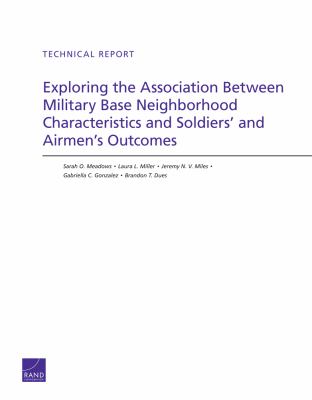
e-Book
|
Exploring the association between military base neighborhood characteristics and soldiers' and airmen's outcomes
Copies
0 Total copies, 0 Copies are in,
0 Copies are out.
Title
Exploring the association between military base neighborhood characteristics and soldiers' and airmen's outcomes
Call No
UC403
Digital Link
Authors
Subjects
United States. Army--Barracks and quarters--Evaluation.
United States. Air Force--Barracks and quarters--Evaluation.
Soldiers--United States--Social conditions--21st century.
Airmen--United States--Social conditions--21st century.
Military bases--United States.
Neighborhood--Social aspects--United States.
Quality of life--United States--Statistics.
Social indicators--United States--Statistics.
Electronic books.
United States. Air Force--Barracks and quarters--Evaluation.
Soldiers--United States--Social conditions--21st century.
Airmen--United States--Social conditions--21st century.
Military bases--United States.
Neighborhood--Social aspects--United States.
Quality of life--United States--Statistics.
Social indicators--United States--Statistics.
Electronic books.
Language
English
Published
Santa Monica, CA : RAND, 2013.
Publication Desc
1 online resource (xx, 144 p.).
ISBN
9780833078513
(pbk. : alk. paper)
LCCN
2013001966
Series









